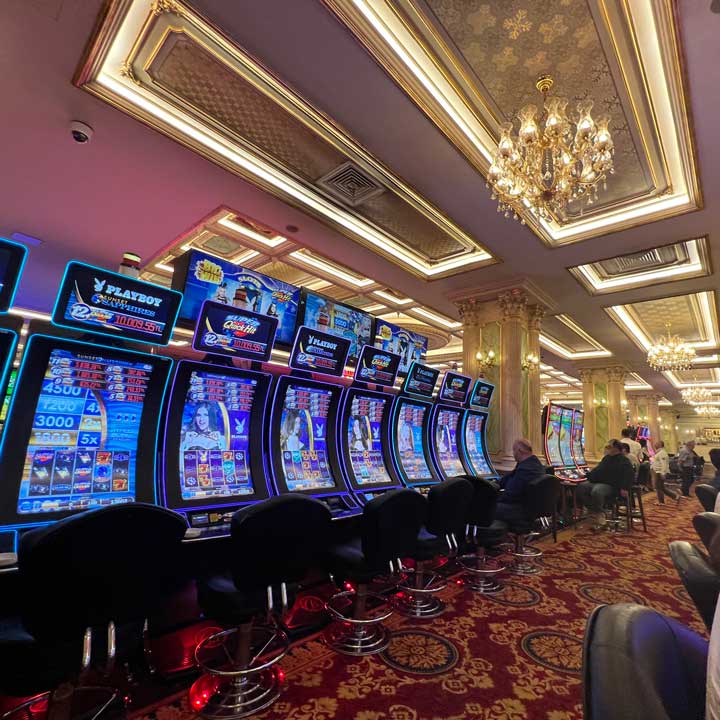
In the shadows of the glittering lights plus those enticing sounds of spinning reels lies an vibrant realm in which creativity meets mathematics: the making of games of chance. While players flock to gaming establishments seeking thrills and the possibility of striking it rich big, a huge amount of effort takes place behind the scenes to create the games they enjoy. From the starting concept to the ultimate product that players interact with, many elements come together to ensure an captivating gaming experience.
Creators, engineers, and game developers work together to combine innovative technology with enthralling gameplay features. Each aspect, from visuals plus sound effects to probabilities plus returns, is carefully crafted to attract players and keep them entertained. Understanding this complex process of the way casino games are made reveals both the technical skills required but also the creative vision that brings these immersive experiences to life.
Game Development Process
The design workflow begins with brainstorming and conceptualization, where creators develop ideas for innovative casino games. This initial phase often includes identifying potential audiences and understanding market trends. Designers take into account factors such as game mechanics, themes, and payout structures to develop an engaging experience. Teamwork between game designers, mathematicians, and artists is crucial to ensure a balanced concept.
Once a design is chosen, the next stage involves prototyping and testing. Designers create a functional version of the game to evaluate its playability and mechanics. This facilitates adjustments and refinements based on feedback from testers. Reiteration is vital, as designers may navigate multiple rounds of evaluations to fine-tune gameplay balance and user experience. non GamStop casinos This phase is essential for identifying any potential issues before the game goes into production.
After testing, the game moves into development and production. This includes the technical aspects of coding the game software, integrating graphics, and making sure compliance with gaming regulations. Quality assurance testing ensures that the game functions seamlessly across various platforms and devices. Once everything is polished, the game is prepared for launch, usually accompanied by promotional tactics to attract players and generate excitement around the latest casino game.
Technology and Advancement
The evolution of gambling games has evolved significantly with progress in technology. Contemporary game design often features high-quality graphics, immersive sound effects, and interactive animations that deliver a thrilling experience for gamers. Game developers use complex software tools and coding languages to build these immersive gaming experiences. Additionally, the use of RNGs ensures fairness and unpredictability in outcomes, which is essential for ensuring player trust and compliance with gaming regulations.
In the past few years, the surge of online casinos has pushed the boundaries of game development even further. Developers are now able to build games that appeal to a global audience, integrating features such as live dealer options and virtual reality environments. This transition has encouraged innovation, leading to unique game mechanics and formats that enhance player engagement. Mobile gaming has also become a significant focus, encouraging developers to optimize games for mobile phones and tablets, ensuring accessibility and ease of access for players on the go.
Collaboration among creators, visual artists, and math experts is crucial in the development process. Each team brings their expertise to ensure games are not only visually appealing but also statistically accurate and enjoyable. The integration of player feedback during beta testing allows developers to improve game features and functionalities, ultimately leading to a favorable launch. As technology continues to advance, the potential for innovative game concepts and experiences is limitless, promising an thrilling future for casino games.
Assessing and Quality Control
Once a casino game has been created, it moves into the critical phase of evaluation and quality control. This phase ensures that the game operates flawlessly and provides a fair experience for users. Teams conduct comprehensive tests, including functionality checks to confirm that all game features work as planned. Each element, from visuals to audio, is evaluated to ensure quality benchmarks are met.
In addition to functionality testing, the game entails rigorous compliance checks to meet legal requirements. Various jurisdictions have specific regulations governing game fairness and player protection. Quality assurance teams will check that the random number generators are functioning correctly and that the game’s payout percentages correspond with market standards. This detailed examination helps build trust with gamblers and regulators alike.
Finally, user testing may be conducted with actual users to collect feedback on user experience. This crucial insight allows developers to execute necessary adjustments before the official launch. Tackling any potential issues identified during this phase helps ensure that players will enjoy a fluent, immersive experience when the game goes live. The commitment to quality reflects the sector’s dedication to delivering enjoyable and trustworthy casino games.
